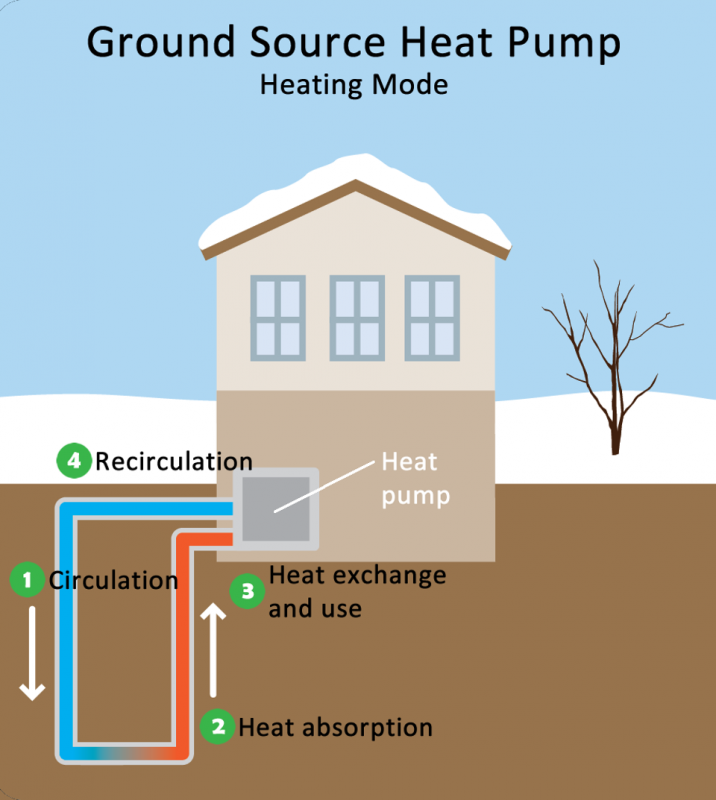 This diagram shows a heat-pump-heating with a geothermal system
This diagram shows a heat-pump-heating with a geothermal system Geothermal systems use the earth’s constant temperature to maintain that same steady temperature in the home. The technology can supply heating, cooling, and water heating, and it can be used with a conventional duct system or a radiant floor system.
Pipes, generally made of polyethylene, are laid in the ground (either horizontally or vertically) in holes drilled to a depth of as little as fifty feet to as much as six hundred feet, depending on the site and the homeowner’s needs. Open-loop systems use well, pond, or lake water as the energy source. Closed-loop systems use an anti-freeze solution sealed inside the buried piping.
In the colder months, the ground heat pump (GHP) absorbs heat from the ground and uses it to warm the air in the house or water in the radiant floor. In the warmer months, the process is reversed, taking heat from the house and transferring it into the ground.The US Department of Energy (DOE) states that “GHP projects provide significant benefits, including consumer energy savings and greenhouse gas emissions reductions.”
Some electric utilities offer incentives for investing in a geothermal system. A geothermal system can be used for heating and cooling both the house and a swimming pool.
There are numerous advantages to using geothermal systems. Although geothermal systems cost more than other systems to install, over time, the homeowner will have free heating and cooling for with this system and a vast reduction in energy costs. There are installation incentives for geothermal systems in some areas of the country; these can be found through the Database of State Incentives for Renewables & Efficiency (DSIRE ) website. Federal tax credits are available for geothermal heating and cooling systems. These credits provide a 30 percent tax savings for installations through this December 31, 2019, with smaller credits available through 2021.
Geothermal systems are long-lasting with the indoor equipment lasting about 25 years, while the underground loop system lasting 50 to 100 years. This is in contrast to other heating and cooling systems which last about 15 to 18 years. Geothermal systems can provide heat for domestic hot water and cool air in lieu of an air conditioning system. Having a geothermal system will add to the property value when the house is resold.
Geothermal systems also produce heating and cooling cleanly without burning fossil fuel, also making the country less dependent on foreign fuel. The energy is available during the whole year and continuously renews itself through the heat of the sun.
According to the US Environmental Protection Agency, geothermal systems are among the most environmentally friendly and cost efficient heating and cooling technology. There is no carbon dioxide, carbon monoxide or other greenhouse gasses emitted into the air, providing a cleaner and safer heating and cooling than some other methods.
For additional information about geothermal systems, check the website of the Office of the Energy Efficiency & Renewable Energy of the US government.